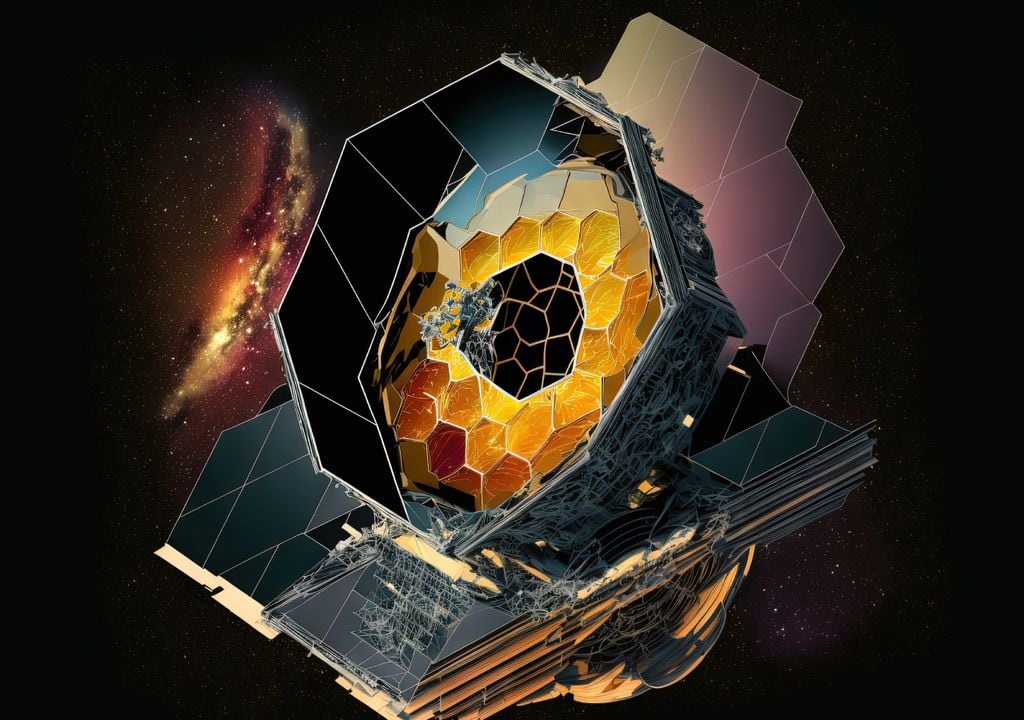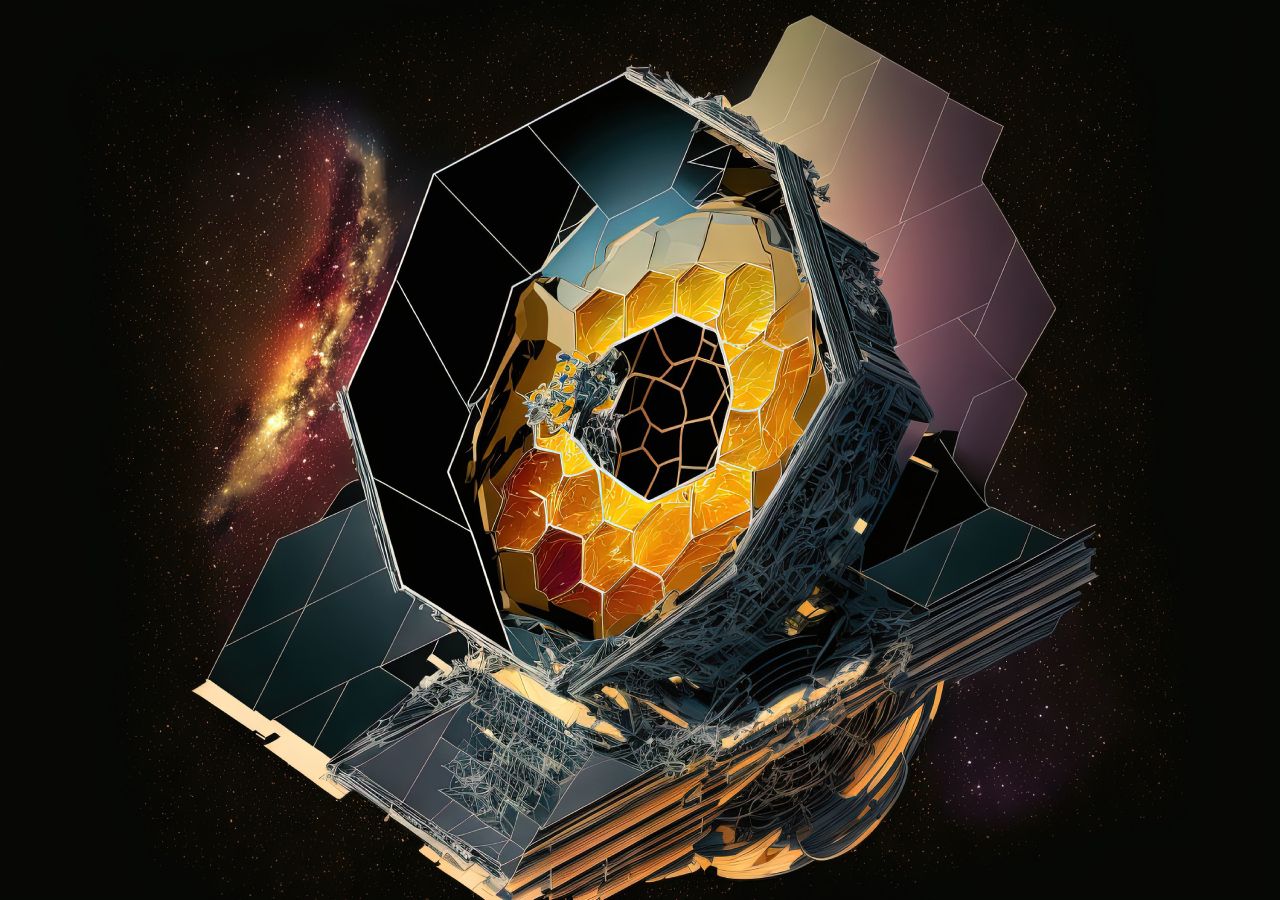
New photo posted James Webb Space Telescope (JWST) A massive, dusty galaxy appears to produce hundreds of stars annually, challenging previous hypotheses about the rarity of such centers in the galaxy. Early universe.
Artists’ impressions depict AzTECC71 as a ghostly entity, suggesting that… Potential changes in scientists’ understanding of widespread star formation.
AzTECC71: A galaxy made of dust challenges the early universe
Collaboration astronomers Cosmos Web It identified AzTECC71, a dusty star-forming galaxy that is forming many stars, but… Its appearance is hampered by a veil of dust. It is possible that this formed approximately a billion years after the Big Bang.
Although such galaxies were thought to be rare in the early universe, this discovery, along with more than a dozen other candidates, challenges previous assumptions, suggesting that they may exist. It is between three and ten times more common than expected.
Jed McKinney, a postdoctoral researcher at Harvard University, called it “a real monster.” University of Texas at Austin, AzTECC71 creates hundreds of stars every yearoffering potential insights into a hidden cluster of galaxies.
If this finding is confirmed, it could mean that the early universe contained much more dust than initially thought. The COSMOS-Web project, co-led by UT Assistant Professor Caitlin Casey, It aims to map up to a million galaxies in a patch of sky the size of three full moons.
The James Webb Space Telescope has rediscovered AzTECC71, a faint galaxy that has eluded Hubble, and reveals that it is busy forming many stars. It is encased in a dust covering that prevents light from passing through it and is almost impossible to see through.
1/Conceptual image. pic.twitter.com/12fLcZyiJc
– Rosario in Paris ᥫ᭡ (@chayito09) December 5, 2023
With the aim of studying the first structures of the universe, the team of more than 50 researchers was commissioned 250 hours of observation during the first year of JWSTIt obtained its first batch of data in December 2022, with more data expected until January 2024.
Dusty star-forming galaxies like AzTECC71 are difficult to observe in optical light due to the absorption and re-emission of dust At longer wavelengths. Before the James Webb Space Telescope, these galaxies were known as “Hubble Dark Galaxies.” McKinney highlights a bias in understanding the evolutionary history of galaxies, where previous observations have been limited to unobscured, less dusty galaxies.
AzTECC71 was initially discovered as a dust emission point by the James Clerk Maxwell Telescope in Hawaii, and was later confirmed with data from the ALMA telescope in Chile. James Webb Space Telescope observations revealed it at a wavelength of 4.44 microns A faint galaxy is in the same location, confirming the new telescope’s ability to detect previously invisible cosmic objects.
Galactic JWST discoveries reveal cosmic dust
Dusty galaxies, which are often difficult to access for optical observations due to dust absorption and re-emission, It’s now within reach thanks to the James Webb Space Telescope and its advanced infrared capabilities.
This powerful telescope can penetrate a thick veil of dust, allowing scientists to study the properties of these tightly obscured galaxies. Both in the visual and infrared spectrum. The sensitivity of the James Webb Space Telescope not only expands our view into the farthest corners of the universe, but also reveals the mysteries hidden behind thick layers of cosmic dust.
If no telescope has yet been able to see beyond the cosmic dust, the James Webb Space Telescope is capable of making observations in both the optical and infrared spectrum.
The research team, led by astronomers McKinney and Casey from the University of Texas at Austin, aims to do just that Explore and understand the nature of these dusty galaxies. Thanks to the James Webb Space Telescope’s ability to penetrate dust, the equipment can do just that And delving into the details of the formation and evolution of these galaxies, Providing valuable information about a host of previously hidden cosmic objects.
This represents a major advance in our monitoring capabilities, Allowing us to discover the secrets of galaxies that were once surrounded by cosmic dustexpanding our understanding of the early universe.
reference News:
McKinney J, Manning S, Cooper O, et al. A dusty, near-infrared galaxy, luminous in the far-infrared at z ∼ 5 in COSMOS-Web. Astrophysical Journal (2023).

“Proud web fanatic. Subtly charming twitter geek. Reader. Internet trailblazer. Music buff.”

:quality(85)/cloudfront-us-east-1.images.arcpublishing.com/infobae/TEQF6EONZRFGLLLDIDD4L2O4EE.jpg)

:quality(75)/cloudfront-us-east-1.images.arcpublishing.com/elcomercio/XU32LRAEZFDDPNVHLFU3CKVBYY.jpg)



More Stories
How to create 3D videos with my iPhone, it will be very useful even for your business
NASA discovers an anomaly in the Earth’s magnetic field that could have serious consequences for humans
Can the Earth be divided into two parts?